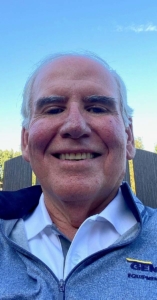High Demand Jobs
High Demand Jobs
This week brings our second guest post from Don Shilling. He talks about the not-so-glamorous world of high demand jobs. Don was born to this industry. In his own words:
I grew up in a construction family and worked for my Dad several summers during and after high school. Then while working on my degree at North Dakota State University I was hired by a construction equipment dealership. I started in their service department part time until I finished college. Then full-time service employment for a couple of years then transitioned into sales management. During the recession of the early 1980’s myself and three other managers started General Equipment & Supplies, Inc.
First as Sales Manager and eventually as President we grew our business from one location and 20 employees to 10 locations in four states and two Canadian Provinces and over 250 employees. Along the way we developed relationships with area Technical Colleges and created a College Tuition Reimbursement Program where today we Recruit a handful of new technicians annually into that program. Our company has also developed two Department of Labor Certified Apprenticeship Programs to fill hard to find skilled positions. I am currently semi-retired as Chairman of the Board.
High Demand Jobs
In my initial blog I discussed the fact that we need to be able to find good people and then train them. This seems simple enough, except what the Workforce Development Council defines as “High Demand Jobs” typically are not considered glamorous. High Demand Jobs don’t get a lot of attention when our youth are exploring their future careers.
Why is that? We find it easy to blame our educational system and all the College promotional materials out there that tout the excitement of degrees in computing or high tech. But, as they say, maybe it is time to look in the mirror if you want to lay blame. The “High Demand Jobs” are typically tied to industries who have allowed this to happen. Owners and managers within these industries have not taken the time to engage the educational system and demand equal time with our youth as they select their career options.
How Do Young People Discover Us If We Don’t Tell Them We Are Here?!
However, thanks to the Pandemic . . . maybe, just maybe, we have reached a time where we can turn that corner. What we have found in our local Workforce Development Council is the jobs that were lost during the Pandemic were tied to people who are perhaps under-skilled. In some cases, these were people who made employment choices early in their careers that were not focused on these high demand employment positions. In fact, most of the jobs that were considered “essential” during the Pandemic are also on the “High Demand Jobs” lists. Perhaps with only a little additional skills training we can help the now under-employed find a stable career that is also considered “essential”.
Industry needs to react to this immediately! As Ron Slee says at the end of each blog, “the time is now,” especially for all of us who employ people in these “high demand jobs.” It is time for us to pull together to support the Career and Technical Education sector as it begins the process of re-tooling our unemployed or under-employed.
By support, I mean something very simple: you need to get involved. Perhaps you can start an apprenticeship program, or connect with your local Career and Technical Education system and see what they might need to start a program that would benefit your labor shortage areas. You can work at recruiting our youth and consider helping the right candidates with educational expenses. Bring them into your businesses and show them opportunities they might have never imagined. Let’s get started! You are going to like what you see in the mirror when you do.




